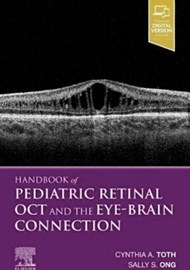Paediatric optical coherence tomography (OCT) imaging of the eye remains an evolving technology to date. This handbook delves into this challenging area successfully and gives a comprehensive and detailed input into paediatric OCT pertaining to the retina and the optic nerve brain connection.
The content is divided into 10 major sections which are then further subdivided into various chapters.
Section 1: Feeds information on the basics, i.e. set up, optimisation, general interpretation, analyses and pitfalls. Chapter 7 and 8 of this section are useful as they cover the interpretation and artifacts pertaining to OCT angiography – a relatively recent innovation to our diagnostic armamentarium.
Section 2: Gives analyses of age-dependent features of ophthalmic OCT images in the children.
Section 3: Highlights research considerations and data protection in imaging, pertaining to the paediatric population.
Sections 4-10: Furnish description of the different pathologies of the retina and the optic nerve. This is followed by information on neurological relevance, OCT features, ancillary tests and treatment options.
The book has been published on good quality, glossy paper. The text is succinct and lucid. The information is well laid out and concise. It is complemented by coloured retinal images and black and white OCT images. Perimetric images are provided where deemed appropriate.
Each book also reveals a unique QR code that can be activated at no extra cost to access the e-version which can be used on a variety of devices.
All in all, this book will not only be a useful information and diagnostic asset for paediatric ophthalmologists, neuroscientists and imaging technicians alike, but will also serve as a valuable library resource.





